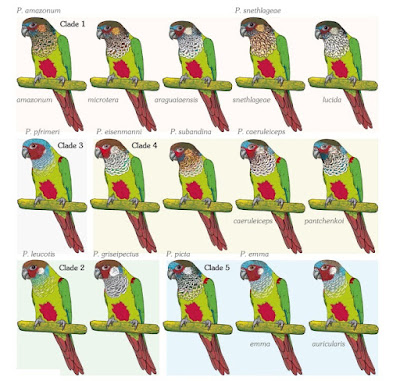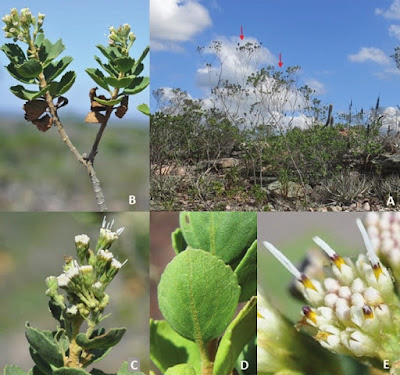[Most Recent Entries] [Calendar View]
Sunday, July 2nd, 2017
| Time | Event | ||
| 2:28p | [Ornithology • 2017] Molecular Systematics, Taxonomy and Distribution of the Pyrrhura picta–leucotis Complex Abstract Introduction: The relationships within the Pyrrhura species complex are partly unresolved. In this study, a comprehensive phylogenetic analysis of the Pyrrhura picta-leucotis complex was carried out, covering all species except P. subandina. Material and Methods: We made a morphological analysis of 745 preserved specimens of all the taxa in different museums. Nucleotide sequences of the mitochondrial cytochrome gene were generated and used to reconstruct a molecular phylogeny of Pyrrhura. Results and Discussion: Our results show that the complex is divided into 6 main groups comprising 15 species. P. dilutissima, regarded up to now as a subspecies of P. peruviana, acquires species status and three new subspecies are described. We also provide evidence that P. roseifrons is a paraphyletic group, indicating the existence of probably 3 lineages of which 2 deserve species status.
Thomas Arndt and Michael Wink. 2017. Molecular Systematics, Taxonomy and Distribution of the Pyrrhura picta–leucotis Complex. The Open Ornithology Journal. 10; 53-91. DOI: 10.2174/1874453201710010053  | ||
| 4:06p | [Botany • 2017] Lapidia apicifolia • A New Monotypic Genus of Asteraceae (Eupatorieae) from Brazil, and Its Phylogenetic Placement Abstract Asteraceae is the family with the highest species number in the rocky fields (campos rupestres) of the Chapada Diamantina, Bahia, Brazil. On the basis of several collections from this area, we are proposing a new genus of Asteraceae based on morphology and phylogeny, to accommodate a species newly described here. Lapidia apicifolia is a loosely ramified shrub 2–4 m high, stem tomentose, leaves opposite-decussate, laminae conduplicate, petiolate, receptacle flat, epaleaceous, glabrous, and pappus of bristles fused at base, irregular in length, fringed and purplish. In a phylogenetic analysis using sequence data from ITS and trnL-trnF of selected members of Eupatorieae, Lapidia is indicated as sister group of a highly supported clade with Morithamnus, Bahianthus and Catolesia. This group is composed by loosely branched shrubs, most with leaves that are lax, stems, leaves and involucral bracts that are viscid (Bahianthus and Morithamnus) and, if not, trichomes (tomentose indumentum) are developed (Lapidia), to protect against both solar radiation and loss of water. A description, illustrations, and a discussion about related and sympatric genera are presented. Keywords: Compositae; endemism; ITS and trnL-trnF; rocky fields; taxonomy; Eudicots; Brazil Nádia Roque, Silvana C. Ferrucci and Cássio van den Berg. 2017. Lapidia, A New Monotypic Genus of Asteraceae (Eupatorieae) from Brazil, and Its Phylogenetic Placement. Phytotaxa. 291(1); 1–16. DOI: 10.11646/phytotaxa.291.1.1  |
| << Previous Day |
2017/07/02 [Calendar] |
Next Day >> |




